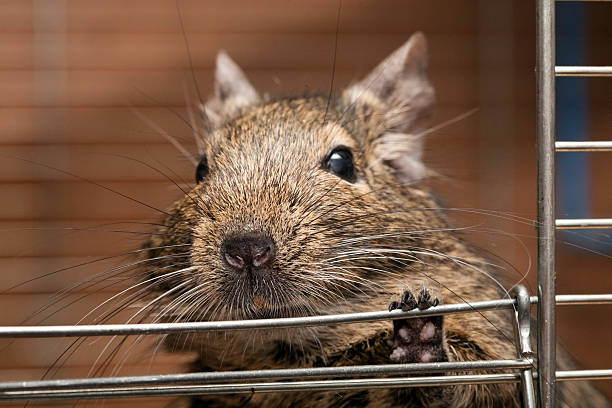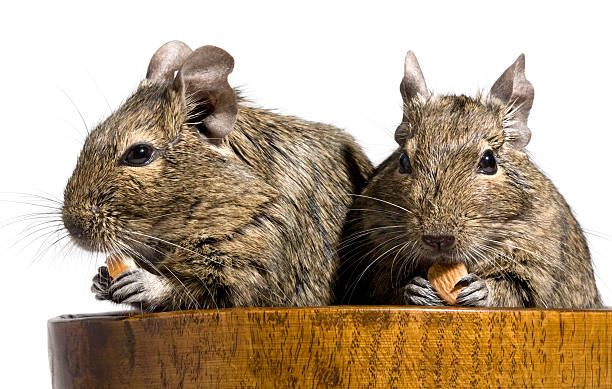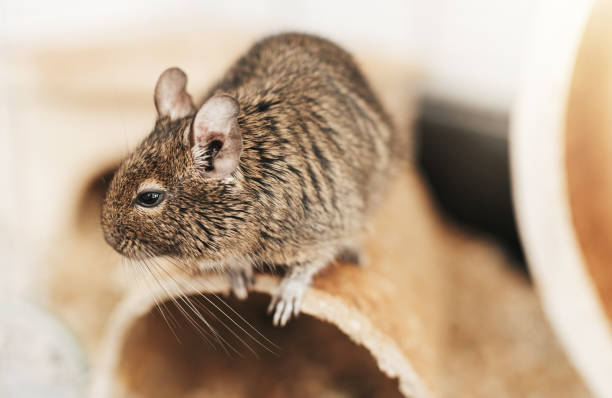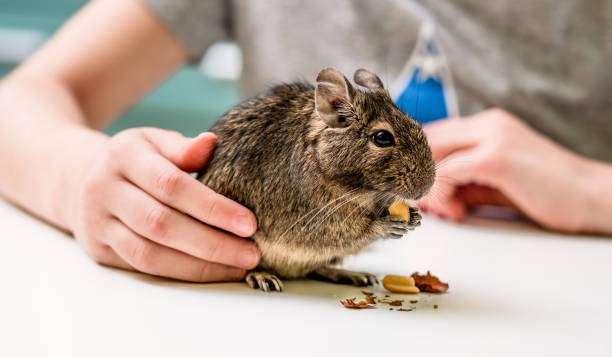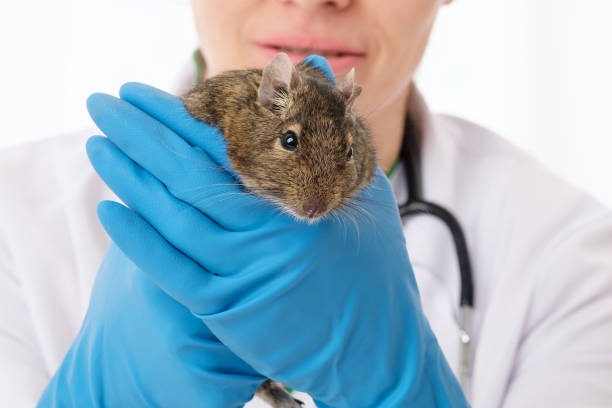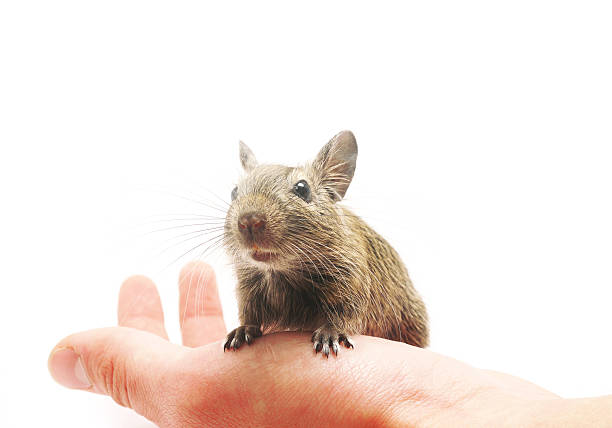8 Steps to a Harmonious Multi-Pet Household: Creating Joyful Bonds with Your Degus and More
This post contains affiliate links. This means I will make a commission at no extra cost to you should you click through and make a purchase. Read the full disclosure here.Introducing new pets into your household can be an exciting and rewarding experience, but it also requires careful consideration and planning, especially when it comes to introducing degus to other animals. Degus, known for their inquisitive nature and social behaviors, can make wonderful additions to multi-pet households, but a successful introduction is key to ensuring a harmonious coexistence.
In this blog post, we’ll guide you through the process of introducing your beloved degus to other pets in your home. Whether you have dogs, cats, rabbits, or any other furry companions, we’ll provide you with valuable insights and tips on how to make these introductions as smooth and stress-free as possible.
Assessing Your Other Pets

Before you even begin the introduction process, it’s essential to take a close look at the other pets in your household. Understanding their temperaments, behaviors, and reactions to new animals will provide valuable insights into how to approach the introduction of degus.
Knowing Your Pets
- Dogs: Consider your dog’s breed, size, and history with other animals. Some dogs have a strong prey drive, while others may be more relaxed around smaller creatures. Assess their obedience and responsiveness to commands.
- Cats: Cats are known for their independent nature. Consider whether your cat has been exposed to other animals in the past and whether they have a calm or assertive disposition.
- Other Small Pets: If you have other small pets like rabbits, guinea pigs, or hamsters, evaluate their interactions with your degus in terms of curiosity, fear, or aggression.
Unique Challenges and Considerations
- Predatory Instincts: Some pets, particularly dogs and cats, may have strong predatory instincts. It’s crucial to be aware of this and take precautions accordingly.
- Territorial Behavior: Pets may be territorial and protective of their living space. Understanding these dynamics can help you plan gradual introductions.
- Past Experiences: Consider any previous experiences your pets may have had with other animals, as this can influence their reactions.
Types of Interactions
Different types of pets may require distinct approaches to introduction:
- Degu-to-Degu: If you have more than one degu, their interactions should also be monitored and managed. Some degus get along seamlessly, while others may have territorial disputes.
- Degu-to-Dog: The approach for introducing degus to dogs will differ depending on the dog’s size, temperament, and history with small animals.
- Degu-to-Cat: Cats may react differently to degus, so understanding feline behaviors is crucial for a safe introduction.
By assessing your other pets, you can tailor your introduction plan to suit their individual needs and tendencies. In the next section, we’ll discuss how to prepare for the introduction process and create a safe environment for your degus and other pets.
Preparing for the Introduction

Once you’ve assessed your other pets and gained insights into their temperaments and behaviors, it’s time to prepare for the introduction of your degus. Safety and a controlled environment are paramount during this phase.
Controlled Meeting Space
Select a neutral and controlled meeting space where the introduction will take place. This space should be unfamiliar to all the pets involved to reduce territorial conflicts. A bathroom, a spacious playpen, or a room with no dominant pet presence can work well.
Pet-Proofing the Area
Before the introduction, thoroughly pet-proof the designated area. Remove any hazards or items that could lead to accidents or harm to your pets. This includes small objects that can be swallowed, toxic plants, and sharp objects.
Health Precautions
Ensure that all your pets, including your degus, are up-to-date on vaccinations and parasite prevention. This minimizes the risk of illness transmission during interactions.
Separate Housing
While preparing for introductions, keep your pets in separate enclosures or living spaces. This prevents any unplanned encounters before you’re ready to begin the introduction process.
Have Necessary Supplies
Have essential supplies on hand, including treats for positive reinforcement, leashes or harnesses for dogs, and carriers or cages for easy separation if needed.
Familiar Scents
Exchange bedding or items between the different pet enclosures in the days leading up to the introduction. This helps familiarize the pets with each other’s scents before they meet face-to-face.
Timing Matters
Plan introductions for a time when both you and your pets are relaxed and stress-free. Avoid introducing pets when you or they are agitated or rushed.
By taking these preparations into account, you’re setting the stage for a successful introduction. Remember that patience and a gradual approach are key to ensuring the safety and well-being of all your pets.
The Gradual Introduction Process

The introduction of your degus to other pets should be a gradual and carefully orchestrated process. Taking it step by step allows your pets to acclimate to each other’s presence without feeling overwhelmed or threatened. Here’s a breakdown of the gradual introduction process:
Initial Separation
- Keep Pets Separated: Begin by keeping your degus and the other pet(s) completely separated. Each pet should have its own space where they feel safe.
- Scent Exchange: Swap bedding or toys between the enclosures of your degus and the other pet(s). This helps them become familiar with each other’s scents without direct contact.
Controlled Visual Contact
- Gated Doorway: Use a baby gate or a pet barrier to create a barrier between the two spaces while allowing visual contact. This enables your pets to observe each other without direct interaction.
- Leash Training (For Dogs): If you’re introducing degus to a dog, leash train your dog and allow them to see the degus through the barrier. This reinforces positive behavior.
Supervised and Leashed Encounters
- Supervised Meetings: When both pets seem comfortable with visual contact, proceed to supervised face-to-face meetings.
- Use Leashes (For Dogs): Keep your dog on a leash during initial meetings to ensure control and safety. Reward calm and non-aggressive behavior with treats and praise.
- Observe Body Language: Pay close attention to the body language of all animals involved. Look for signs of curiosity, fear, aggression, or submission.
Gradual Progress
- Increase Interaction Time: Over time, gradually increase the duration of these supervised encounters. Aim for calm and positive interactions.
- Positive Reinforcement: Continue to use positive reinforcement, rewarding good behavior with treats and affection.
Separation as Needed
- If Tension Arises: If any signs of aggression or stress appear, separate the pets immediately and go back to the previous step. It’s essential to prioritize safety.
Multiple Sessions
- Repeat Introductions: Introduce your pets several times, gradually extending the duration of each interaction, until they become comfortable with each other’s presence.
Full Access
- When Ready: If all interactions go smoothly and your pets exhibit no signs of aggression or undue stress, you can consider allowing your degus and the other pet(s) full access to shared living spaces. However, always monitor their interactions initially.
The key to success in the gradual introduction process is patience. Every pet is unique, and some may adapt more quickly than others. Be prepared for setbacks, and always prioritize safety.
Signs of Progress

Recognizing positive signs of progress during the introduction process is crucial. These signs indicate that your pets are becoming comfortable with each other and are on their way to forming positive relationships. Here are some signs to look for:
Curiosity and Interest
- Curious Exploration: If your degus show curiosity towards the other pet and vice versa, such as sniffing or approaching without signs of fear or aggression, this is a positive sign.
Relaxed Body Language
- Relaxed Posture: Observe the body language of all pets involved. Relaxed postures, including calm tails, ears, and facial expressions, indicate that they are not feeling threatened.
Playful Behavior
- Playfulness: Playful interactions between pets, such as chasing each other or engaging in gentle play behaviors, are encouraging signs of budding friendships.
Reduced Fear or Anxiety
- Lessened Fear: If fear or anxiety levels decrease during each meeting and your pets seem increasingly comfortable with each other’s presence, it’s a positive indicator.
Mutual Tolerance
- Mutual Tolerance: Your pets may not become best friends, but mutual tolerance and coexistence without aggressive behaviors are positive outcomes.
Shared Space Harmony
- Peaceful Coexistence: If your pets can share living spaces without constant supervision and exhibit harmonious coexistence, it’s a significant sign of progress.
Minimal Aggression
- Reduced Aggression: If initial signs of aggression diminish or become infrequent, it’s a sign that your pets are adapting positively.
It’s important to note that progress may be gradual, and setbacks can occur. Always prioritize safety during introductions, and be prepared to go back a step if any signs of aggression or excessive stress reappear. Positive reinforcement with treats and praise can help reinforce good behavior during interactions.
Addressing Challenges

Introducing degus to other pets can sometimes present challenges or unexpected behaviors. It’s important to address these challenges promptly and effectively to ensure the safety and well-being of all animals involved. Here’s how to handle common issues that may arise during pet introductions:
Aggressive Behavior
- Immediate Separation: If any pet displays signs of aggression, such as biting, lunging, or aggressive vocalizations, separate them immediately. Use barriers or enclosures to keep them apart.
- Professional Help: Seek guidance from a professional animal behaviorist or trainer experienced in inter-species interactions if aggression persists. They can provide expert advice and training strategies.
Fear or Stress
- Separation as Needed: If any pet shows signs of fear or excessive stress, such as trembling, hiding, or avoiding interactions, separate them and provide a safe, familiar space.
- Slow Down the Process: Take a step back in the introduction process and progress at a slower pace. Ensure that your pets are comfortable with each other’s presence before advancing.
Unwanted Chasing or Hunting Behavior (For Dogs and Cats)

- Controlled Leash: If your dog or cat exhibits chasing or hunting behavior toward your degus, keep them on a leash during introductions. Redirect their attention with treats or toys when they display this behavior.
- Positive Reinforcement: Reward your dog or cat for calm and non-aggressive behavior around the degus. This reinforces positive interactions.
Territorial Disputes
- Separate Territories: If territorial disputes occur, provide separate enclosures or spaces for your pets. Gradually reintroduce them after some time.
- Slowly Reintroduce: When reintroducing, follow the gradual introduction process once more, starting with visual contact and supervised interactions.
Continued Fear or Aggression
- Consult a Professional: If fear, aggression, or stress persists despite your efforts, consult a veterinarian or animal behaviorist for further evaluation and guidance.
Remember that patience is essential when addressing challenges during pet introductions. Not all pets will become best friends, but with time and proper management, they can learn to coexist peacefully. The well-being and safety of your pets should always be the top priority, and professional guidance is valuable when facing persistent issues.
Maintaining Harmony

Congratulations on successfully introducing your degus to other pets in your household! Now that your pets are coexisting peacefully, it’s important to focus on maintaining harmony and ensuring that everyone continues to live together happily. Here are some tips for maintaining a harmonious multi-pet household:
Supervision
Even if your pets have become comfortable with each other, continue to supervise their interactions, especially during the initial weeks. This ensures that any potential conflicts are addressed promptly.
Enrichment and Play
Provide enrichment activities and playtime for all your pets. Engaging in activities together can strengthen the bond between them and reduce tension. Interactive toys and games can be particularly helpful.
Mealtime Management
If your pets have different dietary needs, manage meal times carefully. Separate them during feeding to prevent food-related conflicts. This also allows you to monitor their individual diets.
Separate Sleeping Areas
Ensure that each pet has its own sleeping area or enclosure where they can retreat to when they need privacy or alone time. Everyone deserves a safe space to call their own.
Routine and Predictability
Establish a routine that includes feeding, playtime, and rest. Pets thrive on predictability, and a consistent schedule can help reduce stress and conflicts.
Veterinary Care
Continue to prioritize regular veterinary check-ups for all your pets. Routine health care ensures that any potential health issues are addressed promptly, reducing the risk of stress-related conflicts.
Addressing Changes
If you introduce new pets or make changes to your household, such as moving to a new home, take gradual steps and reintroduce pets if necessary. Changes can disrupt established routines and dynamics.
Seek Professional Help When Needed
If you encounter persistent behavioral issues, aggression, or stress among your pets, don’t hesitate to seek professional guidance from a veterinarian or animal behaviorist. They can provide specialized advice and strategies to address specific challenges.
Patience and Understanding
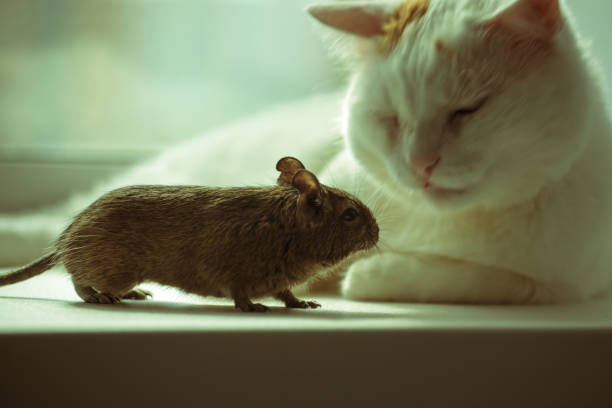
Remember that pets have unique personalities and may have their own preferences and boundaries. Be patient and understanding of their individual needs.
A harmonious multi-pet household is achievable with careful management, patience, and ongoing attention to the well-being of your furry family members. By following these tips and maintaining a peaceful environment, you can ensure that your degus and other pets continue to thrive together.


